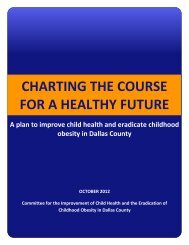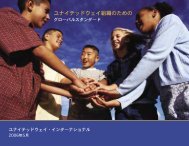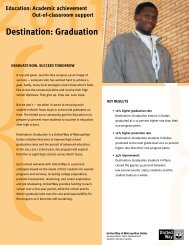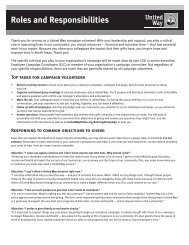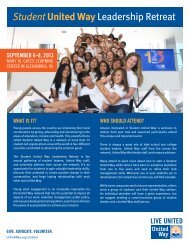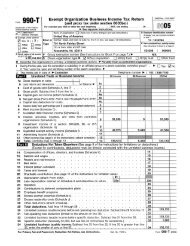out-of-school time
out-of-school time
out-of-school time
Create successful ePaper yourself
Turn your PDF publications into a flip-book with our unique Google optimized e-Paper software.
CHALLENGE AND OPPORTUNITY<br />
Estimates suggest that 15 million children in the United States are with<strong>out</strong> adult supervision for some<br />
period <strong>of</strong> <strong>time</strong> after <strong>school</strong>. iv This unsupervised <strong>time</strong> puts y<strong>out</strong>h at risk for academic and behavioral<br />
problems, drug use, and other types <strong>of</strong> risky behaviors. v Despite increasing awareness regarding these<br />
risks, the number <strong>of</strong> children and y<strong>out</strong>h left on their own in the afternoons has increased. vi<br />
The challenge persists into the summer months. Research on the “summer slide” – the learning loss<br />
that occurs when students are <strong>out</strong> <strong>of</strong> <strong>school</strong> – suggests that, on average, students lose one month <strong>of</strong><br />
instruction in reading and mathematics every summer.<br />
These losses are exacerbated because students have differing levels <strong>of</strong> access to formal enrichment<br />
activities when <strong>school</strong> is <strong>out</strong>. vii While the “summer slide” hits students across the socioeconomic<br />
spectrum, it is pronounced for lower-income students. Middle- and high-income students are <strong>of</strong>ten able<br />
to attend <strong>out</strong>-<strong>of</strong>-<strong>school</strong> <strong>time</strong> programs during the <strong>school</strong> year. In addition, their parents are more likely to<br />
avoid the “summer slide” by arranging and paying for summer camps that extend the <strong>time</strong> their children<br />
are engaged in activities that support their academic growth. In contrast, low-income parents say it is<br />
difficult to find enriching, affordable, safe, and conveniently located activities for their children. viii<br />
Researchers at Johns Hopkins University concluded that two-thirds <strong>of</strong> the achievement<br />
gap between lower- and higher-income y<strong>out</strong>h results from unequal access to summer<br />
learning opportunities. ix Ensuring broad, equitable access to high-quality after<strong>school</strong>,<br />
summer, and other enrichment programs can help to bridge this gap. x<br />
High-quality, well-designed, and well-implemented <strong>out</strong>-<strong>of</strong>-<strong>school</strong> <strong>time</strong> programs can make the<br />
difference, <strong>of</strong>fering:<br />
• Academic enrichment and support;<br />
• The opportunity to build personal skills, cultivate new interests, and to develop<br />
meaningful relationships with peers and supportive adults; and<br />
• The opportunity to engage in extracurricular activities.<br />
Quality programs typically share a set <strong>of</strong> characteristics, including mechanisms for ongoing<br />
communication between staff, participants, and families; strong administrative structures; and<br />
financially stable organizations. xi<br />
High-quality <strong>out</strong>-<strong>of</strong>-<strong>school</strong> <strong>time</strong> programs, such as community or <strong>school</strong>-based mentoring, tutoring,<br />
and family-focused services <strong>of</strong>fered in <strong>school</strong>s, have been shown to improve <strong>out</strong>comes for children and<br />
y<strong>out</strong>h. At the same <strong>time</strong>, poorly designed or poorly implemented programs can have a negative impact<br />
on student development and academic achievement. xii<br />
This impact is supported by more than a decade <strong>of</strong> research and evaluation studies. These studies show<br />
that children and y<strong>out</strong>h who participate in these programs improve in key areas that foster success<br />
in <strong>school</strong>, including social and emotional development, increased interest and engagement in <strong>school</strong>,<br />
homework completion rates, improved classroom grades and performance on standardized tests, and<br />
avoidance <strong>of</strong> risky behaviors. xiii One review <strong>of</strong> 35 studies, for example, reported that the test scores <strong>of</strong><br />
low-income, at-risk y<strong>out</strong>h improved significantly in both reading and mathematics after they participated<br />
8





